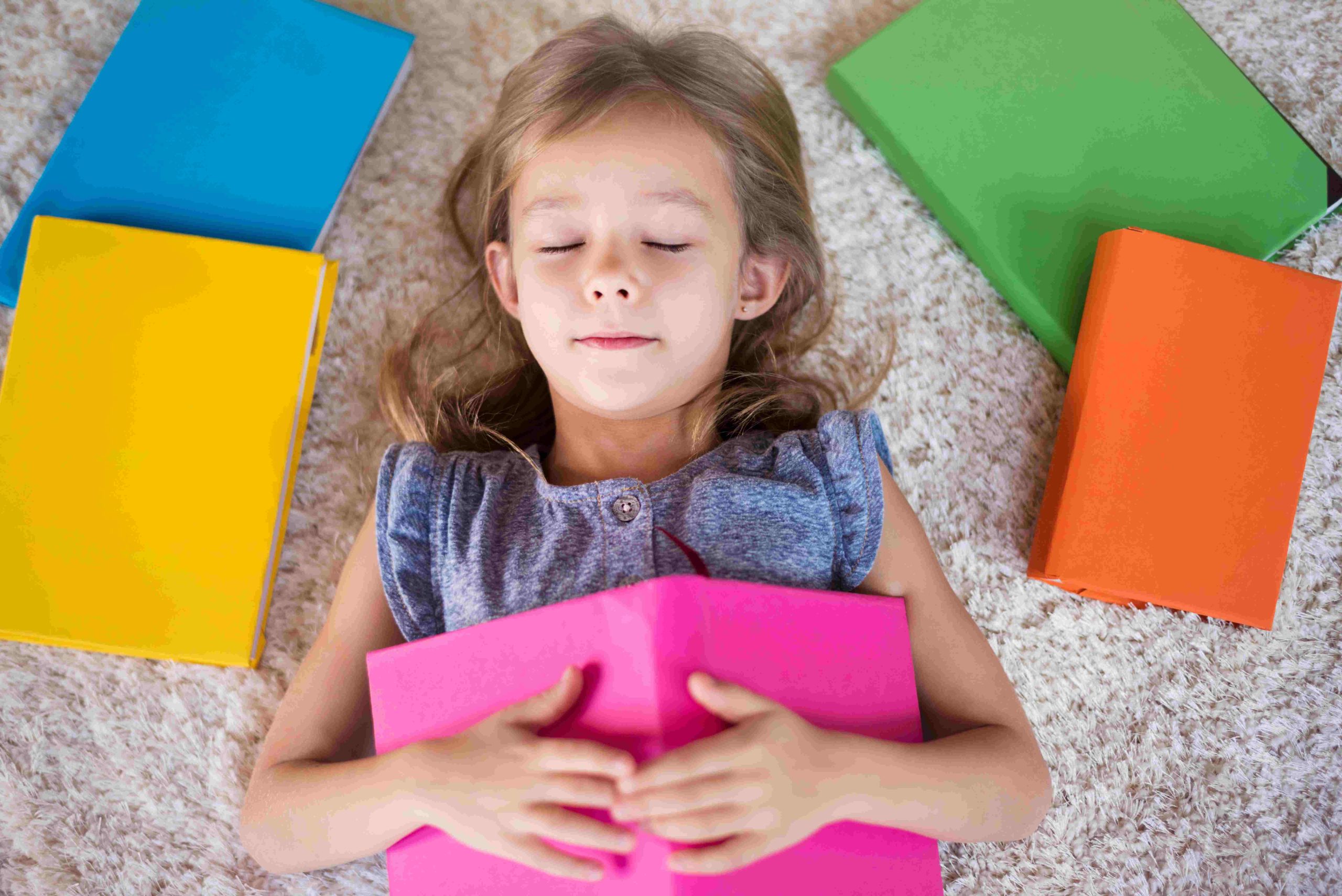
Preschooler Relaxation: Nurturing Inner Peace and Emotional Well-being
Preschoolers lead busy lives, filled with learning, play, and exploration. However, amidst the excitement and energy, it is crucial to provide them with opportunities for relaxation and help them develop healthy strategies to manage stress and emotions. Relaxation not only promotes a sense of inner peace but also enhances their emotional well-being, self-regulation skills, and overall resilience. In this article, we delve deeper into the importance of relaxation for preschoolers and explore various techniques and activities that can nurture their inner calm.
The Benefits of Relaxation for Preschoolers
Relaxation has numerous benefits for preschoolers, supporting their holistic development and well-being. Let’s explore some of the key advantages:
Relaxation techniques help preschoolers reduce stress levels and alleviate anxiety, allowing them to navigate challenges with greater ease and resilience.
Engaging in relaxation activities empowers preschoolers to recognize and manage their emotions effectively, promoting self-control and emotional well-being.
Regular relaxation practices enhance preschoolers’ ability to concentrate and sustain attention, supporting their learning and cognitive development.
Relaxation techniques promote restful sleep, allowing preschoolers to recharge and wake up refreshed, ready for the day’s activities.
By cultivating inner calm, preschoolers can approach social interactions with greater patience, empathy, and understanding, fostering positive relationships with peers and adults.
Creating a Relaxation-Friendly Environment
To foster relaxation, it is crucial to create an environment that promotes calmness and serenity. Consider the following strategies:
Set up cozy corners or quiet spaces in the daycare setting, complete with soft cushions, blankets, and calming sensory elements, where preschoolers can retreat to relax and recharge.
Utilize soft, warm lighting to create a soothing ambiance that encourages relaxation and a sense of comfort.
Incorporate elements of nature, such as plants, nature-themed artwork, and natural materials, to evoke a sense of tranquility and connection with the natural world.
Play gentle, instrumental music or natural sounds, such as rainfall or gentle waves, in the background to create a peaceful and relaxing auditory environment.
Mindfulness and Breathing Exercises
Mindfulness and breathing exercises are powerful tools for preschoolers to cultivate relaxation and self-awareness. Explore the following practices:
Encourage preschoolers to engage in short, mindful moments throughout the day, guiding them to focus on their breath, observe their surroundings, and practice present-moment awareness.
Teach preschoolers deep belly breathing by placing their hands on their bellies and guiding them to take slow, deep breaths in through the nose and out through the mouth. This technique helps calm the nervous system and promote relaxation.
Guide preschoolers through a body scan meditation, where they focus their attention on different parts of their bodies, noticing any sensations or areas of tension, and consciously releasing and relaxing those areas.
Sensory-Based Relaxation Activities
Engaging preschoolers in sensory-based activities can be incredibly soothing and calming. Consider the following techniques:
Create sensory bins filled with materials like rice, sand, or dried beans, along with small toys or objects for preschoolers to manipulate and explore. The tactile experience promotes relaxation and sensory engagement.
Introduce gentle scents, such as lavender or chamomile, through diffusers, scented playdough, or scented oils on cotton balls. These aromas have calming properties and can create a relaxing atmosphere.
Offer a variety of sensory materials, such as textured fabrics, squishy toys, or soft brushes, for preschoolers to touch and explore, stimulating their sense of touch and promoting relaxation.
Art and Creativity for Relaxation
Artistic activities provide an avenue for preschoolers to express themselves creatively and find inner calm. Consider the following approaches:
Provide mandala templates or colouring sheets for preschoolers to fill in with colours of their choice. The repetitive and focused nature of colouring promotes relaxation and mindfulness.
Offer art journals where preschoolers can engage in free-form drawing, painting, or collage, allowing them to express their thoughts and emotions in a safe and creative way.
Encourage preschoolers to create nature-inspired art, such as leaf rubbings, flower paintings, or rock sculptures. The connection with nature and the creative process promotes relaxation and a sense of peace.
Yoga and Movement
Yoga and movement activities can help preschoolers release tension, promote body awareness, and cultivate relaxation. Consider the following approaches:
Teach preschoolers simple yoga poses that promote relaxation and body awareness, such as child’s pose, tree pose, or butterfly pose, along with mindful breathing exercises.
Encourage preschoolers to engage in free-form dance or guided movement activities that promote relaxation and body awareness, such as slow stretches or flowing movements.
Provide ample opportunities for preschoolers to explore nature, engage in outdoor play, and experience the calming effects of being in natural environments.
Promoting relaxation for preschoolers is essential for their overall well-being and resilience. By creating a calm environment, teaching mindfulness and breathing exercises, offering sensory activities, engaging in art and creativity, and incorporating yoga and movement, daycare providers can provide preschoolers with valuable tools to manage stress, regulate emotions, and foster a sense of peace and tranquility. Let us prioritize the importance of relaxation in the lives of our preschoolers, nurturing their well-being and helping them navigate the world with resilience and serenity.
Exploring Further Strategies for Preschooler Relaxation
Storytelling and Guided Imagery
Storytelling and guided imagery techniques can transport preschoolers to a world of imagination and relaxation. Consider the following approaches:
Create or find relaxation stories specifically designed for preschoolers. These stories guide them through a journey of relaxation, encouraging them to visualize peaceful scenes and engage in deep relaxation.
Lead preschoolers through guided imagery exercises, where you describe calming and soothing scenarios, encouraging them to imagine themselves in those settings. This practice enhances relaxation and stimulates their imagination.
Mindful Movement Activities
Combining mindfulness with movement can be an effective way to promote relaxation in preschoolers. Consider the following activities:
Guide preschoolers in a mindful walking activity, where they focus on each step, the sensations in their feet, and the connection with the ground. Encourage them to walk slowly and mindfully, enhancing their body awareness and relaxation.
Introduce preschoolers to simple yoga flows or sequences designed for their age group. These movements combine mindful breathing with gentle stretches, promoting relaxation and body awareness.
Calming Sensory Experiences
Engaging preschoolers in calming sensory experiences can further support their relaxation. Consider the following activities:
Set up a water play area where preschoolers can explore pouring, scooping, and playing with water. The gentle sounds and sensations of water can have a calming effect.
Create sensory bottles using clear containers filled with a combination of water, glitter, and small objects like beads or sequins. As preschoolers shake the bottles, they can observe the swirling glitter and experience a calming visual effect.
Provide quiet sensory activities like playing with kinetic sand, squeezing stress balls, or manipulating therapy putty. These activities engage the senses in a calming and focused manner.
Relaxation Through Nature
Nature offers a natural setting for relaxation and rejuvenation. Consider the following strategies:
Take preschoolers on nature walks where they can explore the beauty of the outdoors, observe plants and animals, and engage in mindful observations of their surroundings.
Play recordings of natural sounds, such as birdsong or gentle rain, in the daycare environment. These soothing sounds create a relaxing atmosphere and connect preschoolers with the tranquility of nature.
Allocate dedicated outdoor quiet time where preschoolers can engage in quiet activities like cloud-watching, sitting in a designated relaxation area, or engaging in nature-based crafts.
Relaxation Games and Toys
Incorporating relaxation-focused games and toys can provide preschoolers with enjoyable ways to relax. Consider the following ideas:
Invite preschoolers to lie down and place a small stuffed animal or soft toy on their bellies. As they breathe deeply, they can observe the rise and fall of the toy, promoting relaxation and focus on their breath.
Provide puzzles with calming images or patterns that preschoolers can assemble in a focused and mindful manner. This activity encourages relaxation and concentration.
Offer sensory toys specifically designed for relaxation, such as stress balls, fidget spinners, or sensory squishies. These toys provide tactile stimulation and can help calm preschoolers’ nervous systems.
Incorporating relaxation practices into the lives of preschoolers is vital for their overall well-being and development. By implementing strategies such as storytelling, guided imagery, mindful movement, sensory experiences, nature exploration, relaxation games, and toys, we can support preschoolers in finding moments of peace and tranquility amidst their active lives. Let us create nurturing environments and introduce relaxation techniques that empower preschoolers to manage stress, regulate their emotions, and cultivate a lifelong practice of self-care. Together, we can foster a generation of resilient, balanced, and emotionally healthy preschoolers.
Incorporating Relaxation into Daily Routines
To further enhance the integration of relaxation into preschoolers’ lives, it is essential to incorporate these practices into their daily routines. By weaving relaxation techniques seamlessly into their day, we can create a culture of well-being and self-care. Consider the following strategies:
Begin the day with calming rituals that help preschoolers ease into the daycare environment. This can include a few minutes of deep breathing exercises, gentle stretches, or a group relaxation activity. These rituals set a positive tone for the day and prepare preschoolers for learning and social interaction.
Introduce regular relaxation breaks throughout the day. These short intervals can be dedicated to activities such as guided breathing exercises, mindful movements, or quiet time with calming sensory materials. By allowing preschoolers to pause, reset, and recharge, these breaks promote focus, emotional regulation, and overall well-being.
Use relaxation techniques during transitional periods, such as moving from one activity to another or preparing for naptime. Engage preschoolers in a brief mindfulness exercise or provide a calming sensory experience to support a smooth transition and reduce potential stress or anxiety.
Encourage parents and caregivers to establish consistent bedtime routines that prioritize relaxation. This may include activities like reading a soothing story, practicing gentle stretches or yoga poses, or listening to soft music or guided relaxation audios. By creating a calm and comforting bedtime routine, preschoolers can experience a restful night’s sleep, which is vital for their overall well-being and development.
Infuse mindfulness and relaxation into everyday interactions and conversations with preschoolers. Use gentle and calming tones, encourage them to express their emotions, and validate their experiences. By creating a supportive and empathetic environment, we help preschoolers develop emotional resilience and a sense of security.
As caregivers and educators, we must lead by example. Incorporate your own relaxation practices and self-care routines into your daily life, both within and outside of the daycare setting. When preschoolers observe adults prioritizing relaxation, they learn the importance of self-care and are more likely to embrace these practices themselves.
Monitoring and Adjusting Relaxation Strategies
While implementing relaxation techniques, it is crucial to monitor their effectiveness and make adjustments as needed. Each preschooler is unique, and what works for one may not work for another. Keep the following considerations in mind:
Observe preschoolers’ responses to relaxation activities. Pay attention to their engagement, levels of calmness, and overall well-being. Seek feedback from parents and caregivers regarding any changes they notice in their child’s behavior or emotional state. This information can help guide the selection and modification of relaxation strategies.
Be flexible and open to adapting relaxation strategies to meet individual preschoolers’ needs. Some may respond better to certain techniques or activities than others. Tailor the approach to accommodate different preferences and sensitivities, allowing each preschooler to find their own path to relaxation.
Maintain open lines of communication with parents and caregivers. Share information about the relaxation techniques being implemented and discuss any concerns or observations. Collaborate with them to ensure consistency in the application of relaxation practices between the daycare and home environments.
Stay updated on the latest research, best practices, and resources related to preschooler relaxation. Attend training workshops, participate in professional development opportunities, and engage in discussions with colleagues to expand your knowledge and refine your approach.


